How to Cut Sugar Out of Your Diet (Without Going Crazy)
Cutting sugar out of your diet is one strategy to lose weight and feel healthier, but it can be a tough transition. Here are eight tips on how to go sugar-free without going crazy, plus ideas on what to eat on a low-sugar or no-sugar diet.
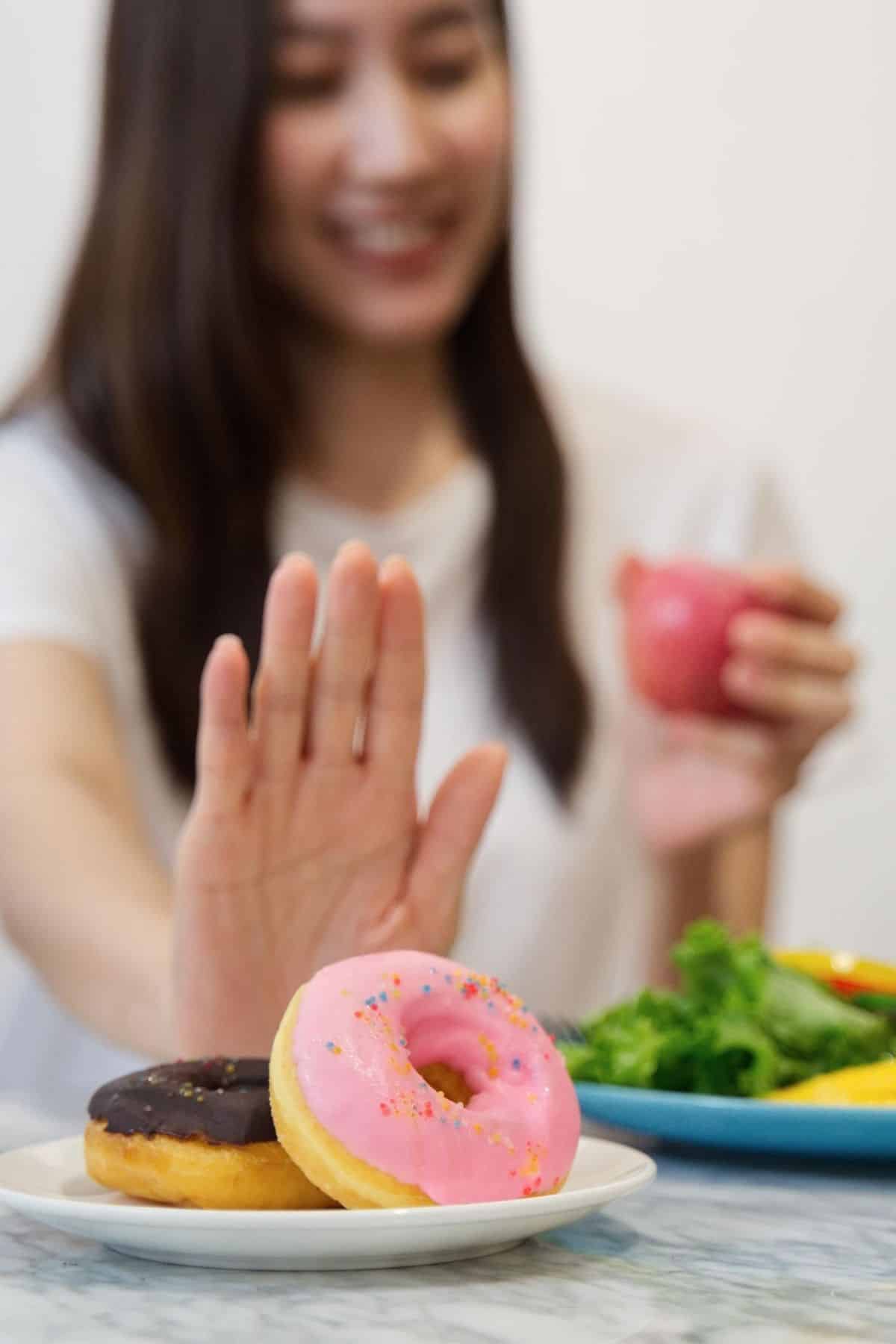
Is Sugar Bad For You?
Sugar is highly addictive and can control you if you eat too much. Some studies have shown sugar to be more addictive than cocaine and nicotine.
Prolonged intake of sugar has been linked to mood disorders, obesity, diabetes, and other serious metabolic disorders.
It may seem like a struggle to go sugar-free at first (and it can be!), but it will get easier. Experiment with the tips included in this article and you’re much more likely to beat the sugar blues without going crazy.
Who Should Go Sugar Free?
Ideally, most people would be on a low-sugar or sugar-free diet.
The American Heart Association recommends limiting added sugars to no more than 100 calories of added sugars for women (6 teaspoons) and 150 calories for men (9 teaspoons).
A sugar-free diet or one low in added sugars can be especially helpful for those having difficulties with blood sugar levels or systemic inflammation. This can include those with pre-diabetes, diabetes, heart disease, PCOS or other hormonal imbalances, or an autoimmune disease.
A no-sugar diet is more restrictive and can refer to a diet where you avoid even natural foods that have higher amounts of sugar. People who have diabetes or pre-diabetes should probably be on a sugar-free diet, choosing real foods that have a low glycemic index.
Learn how to naturally detox your body from sugar.
Keep in mind that even vegetables can contain sugar in small amounts, so a true no-sugar diet may be unnecessarily restrictive for the majority of people. Learn more about the difference between natural sugars and added sugars.
If you don’t have diabetes or pre-diabetes but still want to manage your blood sugar and inflammation, try cutting back on added sugars and see if you get an improvement in symptoms and blood markers.
People with diabetes type 1 or diabetes type 2 will likely need to do glucose monitoring, as well as other blood tests. If you are pre-diabetic or concerned about your blood sugar levels, you can ask your doctor about checking your A1C levels.
What is a Low-Sugar or Sugar-Free Diet?
A low-sugar diet is a diet plan that focuses on maintaining low overall sugar intake. There isn’t one strict definition of this diet, but it usually means choosing real foods and avoiding packaged or prepared foods that have added sugars.
Processed foods such as common snack items, fast food, and most restaurant meals contain added sugar for both flavor and appetite stimulation. Added sugars are not only limited to obvious items like cookies or candy. Even processed foods like store-bought marinara, dairy products, white bread, breakfast cereals, cured meats, or frozen meals often contain high amounts of added sugar.
A low-sugar diet plan eliminates processed foods as much as possible or suggests processed foods without added sugars.
See my full Sugar Free Foods List.
One person may choose to eliminate processed foods on a low-sugar diet but continue to include real food sources of sugar. Another person may choose to eliminate processed foods and high-glycemic foods such as natural and artificial sweeteners, fruit, fruit juice, table sugar, and high-carbohydrate foods.
There are many ways to tailor this diet to your needs but generally speaking, a low-sugar or sugar-free diet is any diet that limits sugar with the intention of avoiding blood sugar instability and overall inflammation.
For most people, a sugar-free diet can include natural sugars from whole fruits and complex carbohydrates like sweet potatoes. But, you may need to speak to your doctor to see how strict you need to be with your diet.
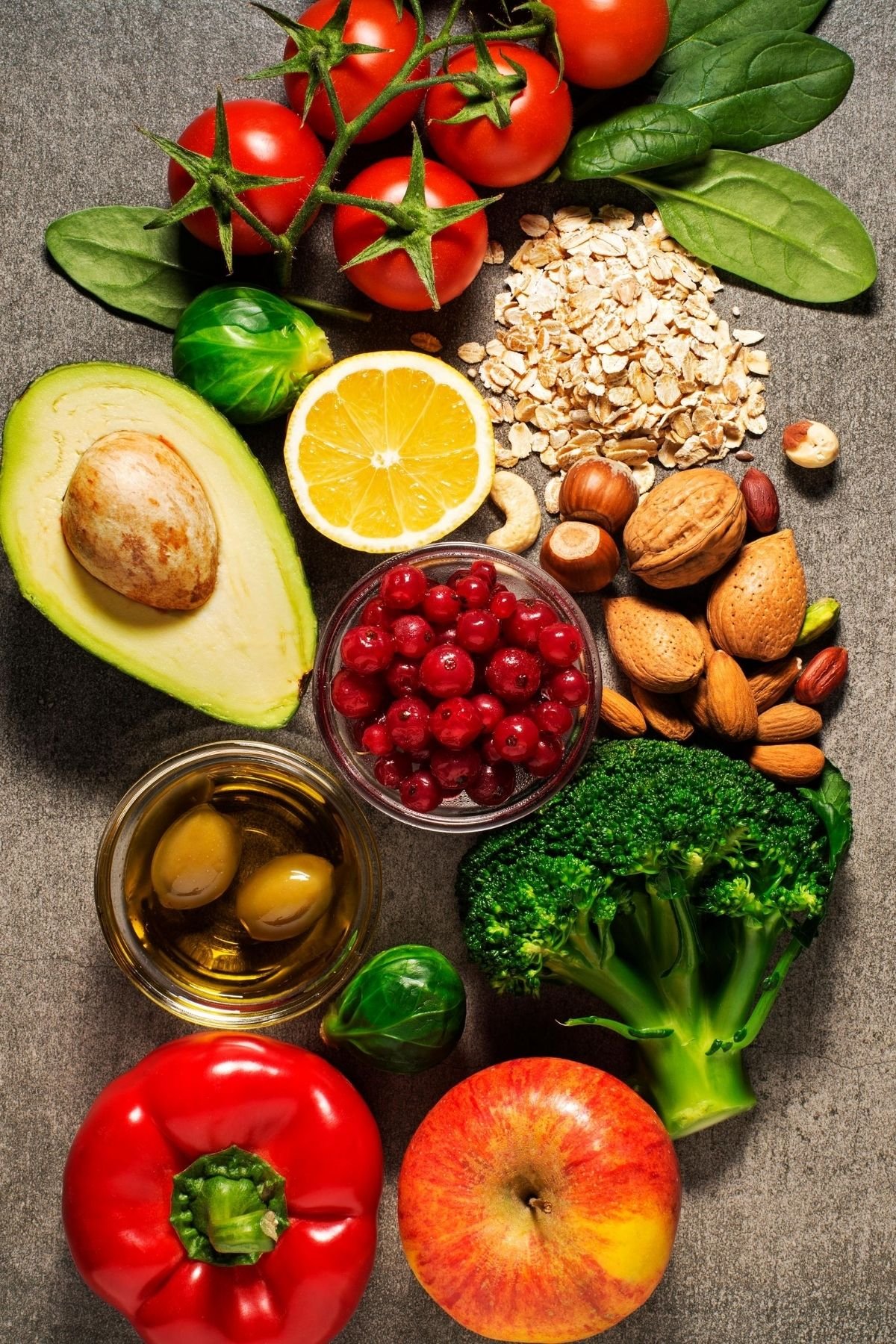
Added Sugars to Avoid
If you’re looking to get healthier, you might want to reduce your intake of added sugars.
Here is a list of names that food manufacturers use to hide sugar in packaged foods. Companies use different names to try and fool you into thinking there is less sugar than there actually is.
Always read the ingredients list on packaged foods in the grocery store. This includes even foods like ketchup, yogurt, salad dressings, and others.
Avoid these added sugars to better your health!
- Agave nectar
- Barbados sugar
- Barley malt
- Barley malt syrup
- Beet sugar
- Brown sugar
- Buttered syrup
- Cane juice
- Cane juice crystals
- Cane sugar
- Caramel
- Carob syrup
- Castor sugar
- Coconut palm sugar
- Coconut sugar
- Confectioner’s sugar
- Corn sweetener
- Corn syrup
- Corn syrup solids
- Date sugar
- Dehydrated cane juice
- Demerara sugar
- Dextrin
- Evaporated cane juice
- Free-flowing brown sugars
- Fructose
- Fruit juice
- Fruit juice concentrate
- Glucose
- Glucose solids
- Golden sugar
- Golden syrup
- Grape sugar
- HFCS (high fructose corn syrup)
- Honey
- Icing sugar
- Invert sugar
- Malt syrup
- Maltodextrin
- Maltol
- Maltose
- Mannose
- Maple syrup
- Molasses
- Muscovado
- Palm sugar
- Panocha
- Powdered sugar
- Raw sugar
- Refiner’s syrup
- Rice syrup
- Saccharose
- Sorghum syrup
- Sucrose
- Sugar (granulated)
- Sweet sorghum
- Tracle
- Turbinado sugar
No Sugar Diet Tips
Whether you’re looking to increase weight loss, reduce weight gain, increase energy levels, or manage symptoms of inflammation, these tips to go sugar-free should help!
You may also wish to consider my Sugar Free Challenge if you want more information and support on your sugar-free journey.
You might also want to read my article on Weight Loss Tips for Women which can provide some helpful ways to manage your weight.
1. Increase Healthy Fat Intake to Improve Satiation
If you eat more fat with your meals and snacks, you’ll generally crave less sweet stuff and have fewer symptoms of sugar withdrawal.
One gram of fat contains 9 calories while one gram of sugar contains 4 calories. Fat is more satiating, making you feel more full for a longer period of time.
Even the American Health Association advises people to consume enough healthy fats.
Opt for healthy fats like:
- avocados,
- nuts and seeds,
- coconut oil,
- olive oil,
- butter or ghee (if you tolerate dairy),
- fattier fish like salmon, mackerel and sardines.
Adding more healthy fat sources to your meals should decrease after-meal or snack time cravings for sugary treats.
This means including an olive-oil based salad dressing with greens, a side of guacamole with your main dish, or having a small handful of nuts or fruit (try my frozen grapes recipe) for a snack.
Most people should include at least 1-2 tablespoons of a healthy fat with a meal to get enough.
And, if you find your sugar cravings are out of control, you can increase your sources of healthy fats to help stave off the cravings. Then, as your sugar cravings subside over time, you can gradually decrease your fat intake if you find that you are gaining weight.
Learn more about how to eat clean and clean eating for weight loss.
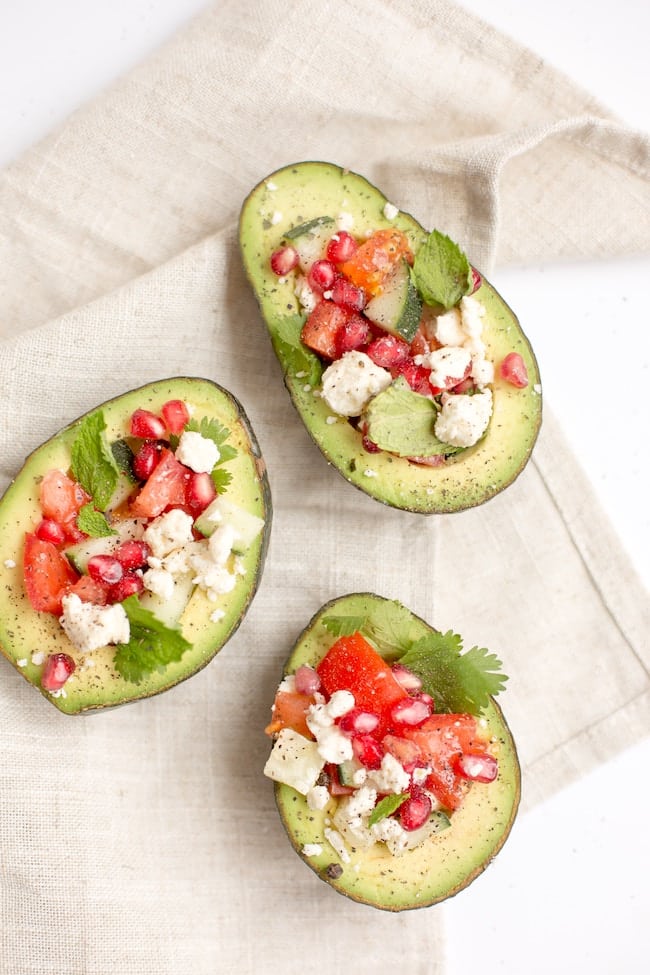
2. Get More Sleep to Balance Hunger Hormones
Studies have shown that shorter sleep duration is associated with an elevated body mass index. The reason for this is because your appetite regulating hormones (leptin and ghrelin) are negatively impacted by sleep debt, causing you to crave easy sources of energy that often come from sweets.
Another study found that sleep deprivation was linked to junk food cravings due to the change in endocannabinoid receptors in sleep-deprived individuals. In other words, poor sleep makes you have a bigger appetite for calorie-rich foods.
Lastly, lack of sleep can even impede weight loss efforts. The science is clear that sleep should be a priority for almost everyone. Whether you’re trying to get healthier, lose weight, or just recover from life’s daily stressors, quality sleep is vitally important.
If you make sleep a priority and aim to get at least 7-9 hours per night, your hunger hormones balance out and your cravings for the sweet stuff are reduced.

3. Practice Stress Management Techniques to Control Emotional Eating
If you’re like me, then you often reach for sweet treats when you’re feeling stressed, anxious, bored, or uncomfortable. It’s a natural reaction because it targets our brain’s reward center.
Even though emotional eating is common among those who are stressed out, there are ways to control it.
Adopt a meditation practice, go for a walk outside, sip some calming tea, meet up with a friend for yoga, or try some breathing exercises.
Finding something to take your mind off your cravings is necessary when you’ve been involved in a stressful event and are prone to emotional eating. Even a 5-minute distraction can help stave off sugar cravings and help you figure out what you really need in that moment.
If you think you have a true sugar addiction, then you might need professional help. See this post about how to beat sugar addiction.

4. Use Fruit to Satisfy Your Sweet Tooth
Low glycemic fruits such as berries, green apples, and fruits from the citrus family are good natural options to help you satisfy a sweet craving. These fruits provide a hint of sweetness while also providing you with a fair amount of fiber and beneficial phytonutrients.
The fiber fills you up and the phytonutrients provide your body with vitamins and minerals that help you meet nutrient requirements so you don’t try to seek them out somewhere else.
So, unless your doctor has advised you to avoid fruit due to blood sugar issues, then you can use fruit to help satisfy your sweet cravings.
Whole fruit is nature’s dessert and can be enjoyed in moderation by most people. Try to stick with fresh or frozen fruits as opposed to dried fruits.
I even have a recipe for Sugar-Free Apple Crisp which is so satisfying and enjoyable.
You might also like my fruit recipes for Frozen Grapes, Dehyrated Watermelon, Pineapple Orange Smoothie, and Chocolate Avocado Ice Cream.
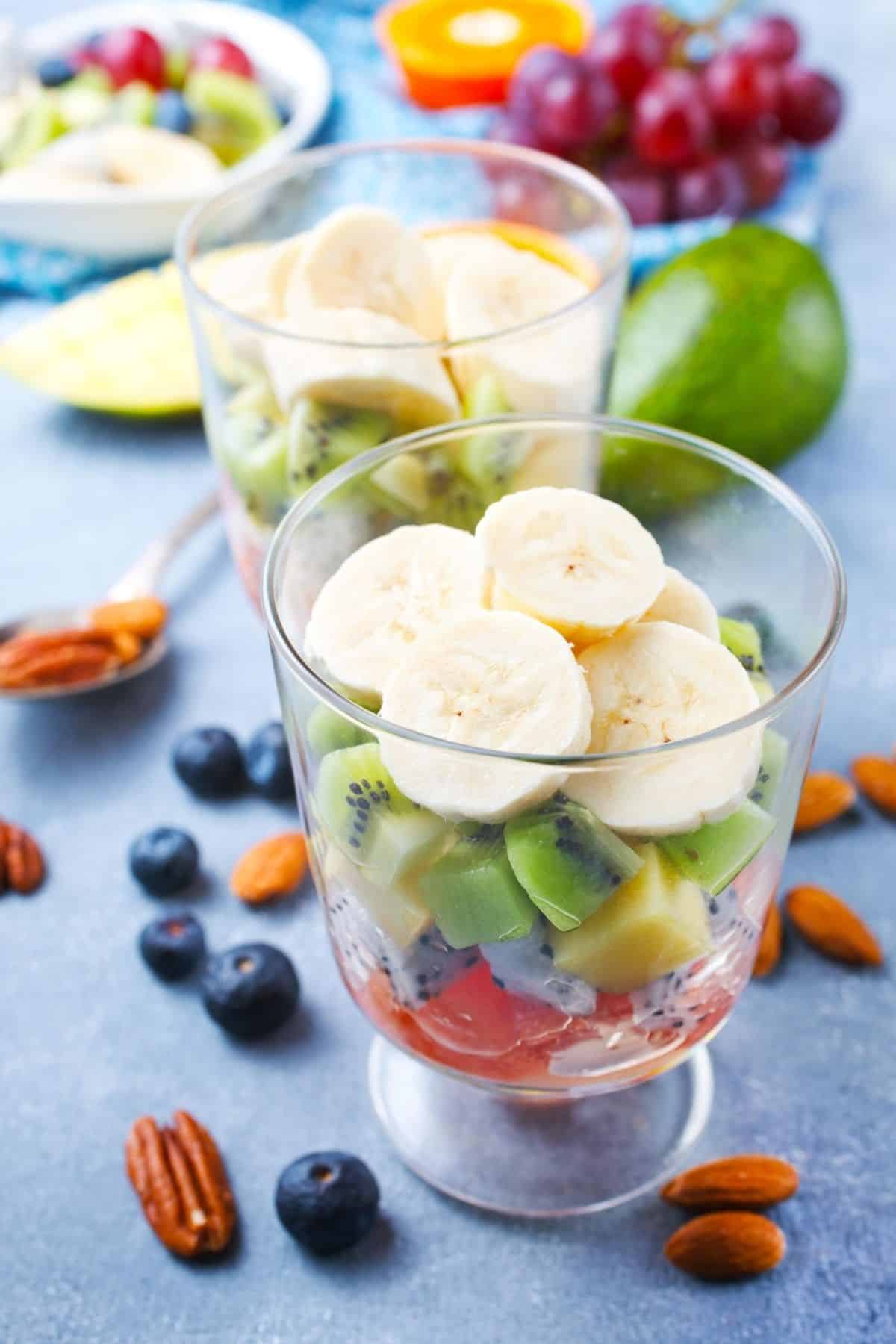
5. Drink More Water
Often times you may think you’re hungry when in fact your body is in need of some hydration.
Drinking one to two glasses of water when you get a sugar craving can help quell that craving. Drinking plenty of water throughout the day also helps keep cravings at bay and help with any symptoms of sugar withdrawal.
If you aren’t a fan of plain water, try adding slices of fruits, cucumbers or mint to your water to make it more pleasing to your palate.
Here are some really easy recipes for Cucumber Ginger Water or Lemon Cinnamon Water. You can also try sparkling mineral water or naturally flavored carbonated waters to add some interest.
Or, if you want to consume juices instead of water, opt for vegetable based juices such as Celery Juice, Beet Juice, Best Vegetable Juice, or Carrot Juice. You could also try this Apple Cider Vinegar Detox.
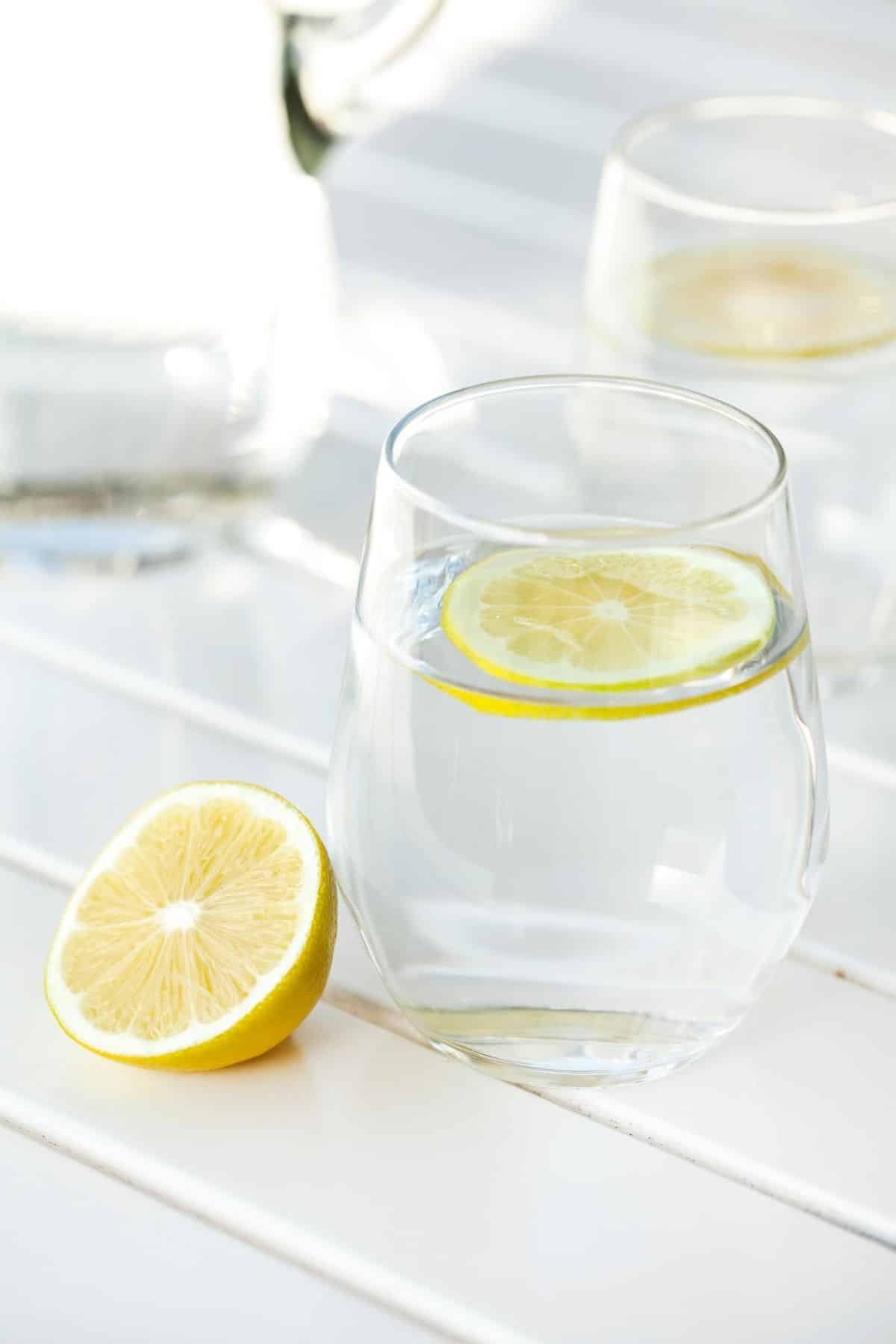
6. Boost Your Feel Good Hormones
Serotonin is also known as the happiness hormone. Serotonin levels can be raised through exercise, a nutritious diet and plenty of restorative sleep. People with higher serotonin levels are less likely to experience sugar cravings.
If you are transitioning to a sugar-free diet after eating too much sugar, then you’ll need to take extra good care of yourself.
Go for a gentle walk, try some soothing yoga or stretches, take a hot bath, or talk to a friend. Do whatever it takes to increase self-care and help prevent the drive to turn to sugary treats.

7. Consider Sugar-Free Alternatives
As you start on your sugar-free journey, you might be tempted to try diet soft drinks or diet foods that are made with sugar substitutes.
There are plenty of sugar substitutes available on the market, but not all of them are considered healthy.
But, you may need to be cautious about using sugar-free alternatives when you’re trying to cut back on sugar.
The jury is still out as to whether or not it’s a good idea to use sugar alternatives as opposed to simply cutting back on sugar or going 100% sugar-free.
Aspartame is the sugar substitute generally found in diet drinks. It also goes by the name of NutraSweet and is made in a lab from aspartic acid and phenylalanine dipeptides. There have been concerns about aspartame as a potential carcinogen.
Another sugar-free alternative to stay away from is sucralose, also known as Splenda. A 2017 study found that zero-calorie sweeteners such as aspartame and sucralose were actually found to increase, not decrease, weight.
Stevia and monk fruit extract may be better sugar alternative choices. Neither stevia nor monk fruit have been shown to be unsafe or have negative side effects, so right now they’re probably the safest options.
Still, it’s important to be cautious when using “diet” foods that include sugar-free sweeteners. The Mayo Clinic says that sugar alternatives may help reduce your dependence on added sugars, but that you might need to be cautious as your tastebuds might get used to the sugary taste.
See my list of acceptable sugar substitutes.
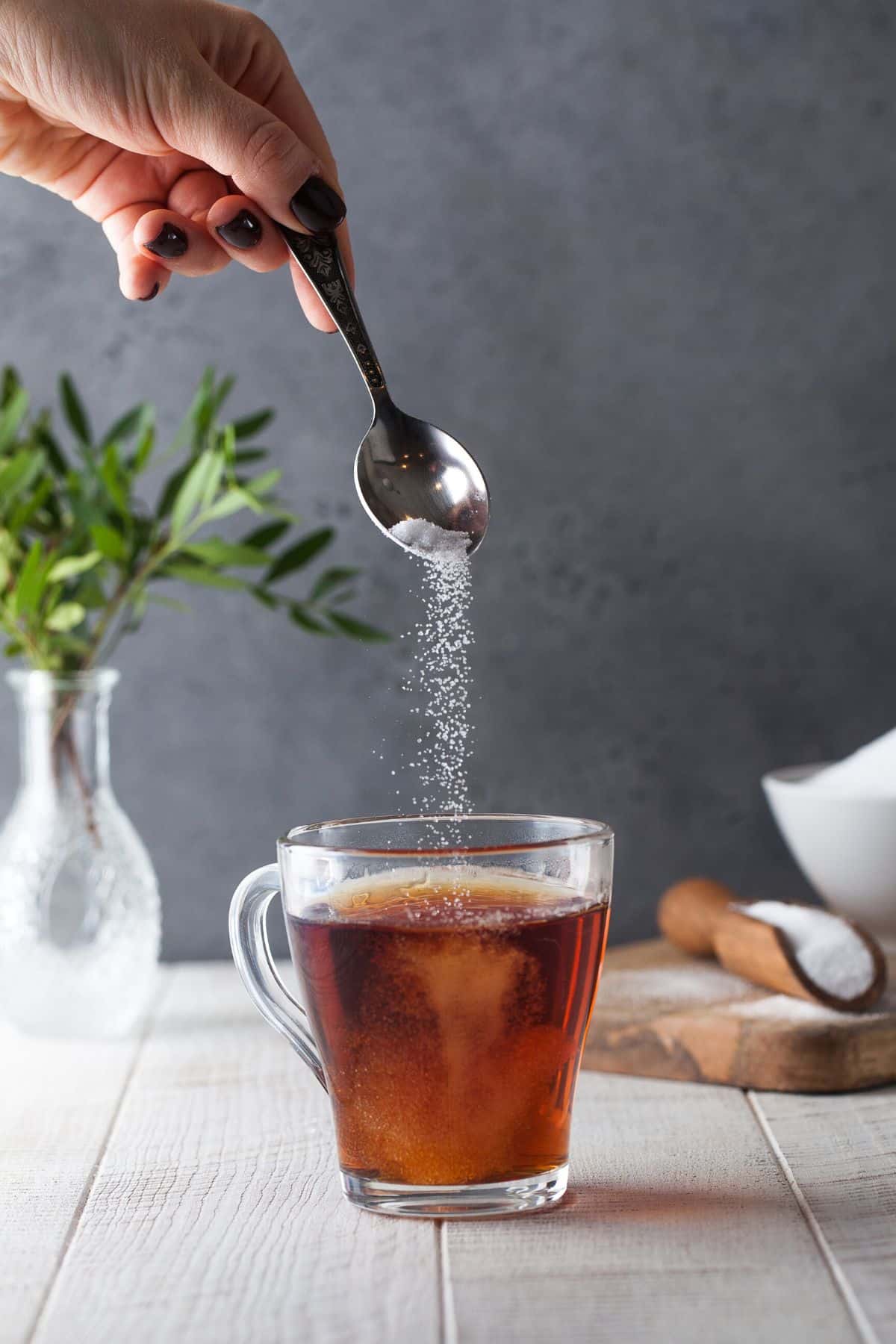
8. Know Your Limits
It’s up to you to determine how far you need to go on your sugar-free journey. Some people can limit themselves to one treat a day. Others need to go completely sugar-free and can’t even have sweet fruits without triggering a sugar craving.
Some people report that even just a tiny hint of something sweet provokes intense cravings. For these people, it is recommended that they quit all sweet stuff temporarily. This includes fruit and safe zero-calorie sugar alternatives.
If you fall into this category, as many people with insulin resistance often do, you can add back in sweet alternatives once your taste buds have been reset. This can be anywhere from two weeks to a full year. You’ll just have to know what works for you through intuition and trial and error.
You’ll also need to discuss with your doctor how much sugar (even from fruits and natural sources) is okay for your personal situation.
But, if you are otherwise healthy and are trying to cut back on sugar, then you’ll need to experiment to see how strict you need to be to keep your sugar cravings in check.
FAQs
This can be tricky! Ideally, you are eating mostly real food which wouldn’t have a label. Foods that come in a package often have hidden added sugars. So, some of the ingredients on the package might not sound like sugar, but they are. See my infographic above about hidden sugars.
You don’t have to give up fruit unless you have some health reason for avoiding it or your doctor has advised you to not eat it. Fruit contains fiber, antioxidants, vitamins, minerals, and carbohydrates. There are fruits that are lower in natural sugars which include blueberries and strawberries.
It’s not a contest and please don’t feel guilty if you have sugar when you don’t intend to. In this case, it might be good to review your reasons for going sugar-free and think about what other choices you could make in the future, especially in a similar situation.
Just eat real foods! Seriously, you can eat so many foods on a sugar free diet, including fruits, vegetables, whole grains, animal protein, eggs, dairy, nuts, seeds, avocados. See my clean eating food list for a comprehensive list.
You might also want to check out the best clean eating websites and the best healthy YouTube cooking channels for recipe inspiration. And, if you’re totally new to cooking, don’t miss my post on the safest cookware for your kitchen.
There are a lot of low sugar foods! In general, low sugar foods are those high in protein, fat, or fiber and low in natural or added sugars.
Animal proteins including beef, poultry, and seafood are high in protein and contain no carbohydrates or sugar. Foods like spinach, arugula, squashes, cruciferous veggies, and other non-starchy vegetables are low in carbohydrates and sugar and high in fiber.
Fruits like berries and starchy vegetables like sweet potatoes and plantains are higher in sugar and carbohydrates, but are still welcome on a low sugar diet in moderation. Higher-glycemic fruits such as apples, grapes, bananas, and melons can also be included on a low-sugar diet in moderation.
See my complete list of the best no-sugar foods.
Added sugars are any sugars that are not naturally occurring in the food you’re consuming. Added sugars are a possibility with processed foods or baked goods and can include sugars such as white/brown sugar, corn syrup, and dextrose or natural sugars like coconut sugar, maple syrup, and honey.
Added sugars are most commonly found in sweet snacks, sodas, and candy, but can also be found in sauces, granola bars, non-dairy milk products, yogurt, frozen meals, and countless other processed foods.
Learn more about natural sugars vs. added sugars.
A low sugar diet is not necessarily a low-carb diet. You can still eat a sufficient amount of carbohydrates by consuming vegetables, low glycemic fruits, and whole grains.
However, if you’re following a low sugar diet to manage blood sugar and disorders like diabetes, you may want to consider the glycemic index of the carbohydrate sources you choose. See my list of carbohydrates without gluten.
For more support on going sugar-free, you are invited to join my free Sugar Free Challenge.
Don’t Miss These Extra Sugar-Free Diet Resources
Conclusions
Most people would benefit from cutting back on sugar in their diets. Most nutrition experts agree that the best diet for most people is one that is balanced in macronutrients, and may include natural sweeteners on occasion.
Don’t forget to join my newsletter list to get exclusive clean eating recipes and tips. The newsletter is 100% free with no spam; unsubscribe anytime.
About the Author: Carrie Forrest has a master’s degree in public health with a specialty in nutrition and is a certified holistic nutritionist. She is a top wellness and food blogger with over 5 million annual visitors to her site. Carrie has an incredible story of recovery from chronic illness and is passionate about helping other women transform their health. Send her a message through her contact form.
Note: this post is for informational purposes only and is not intended as medical advice. Please consult your healthcare provider for recommendations related to your individual situation.


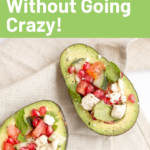
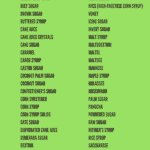
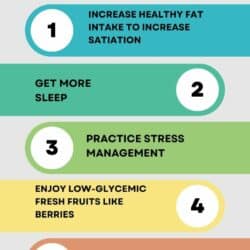

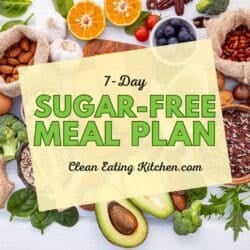
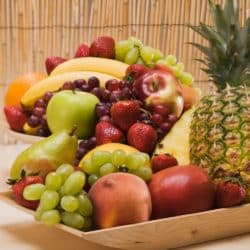
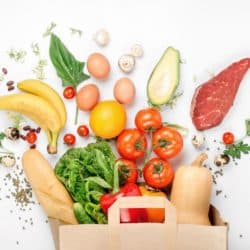


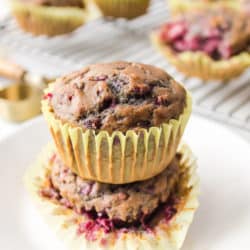
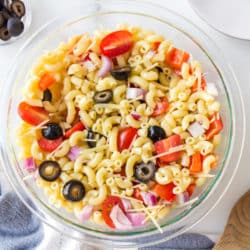

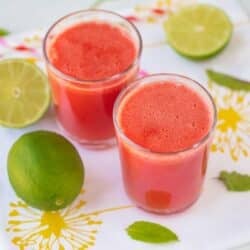








I’m so glad I found this. I recently had two amputations due to being diabetic. My ACI is currently at 14.2. A healthy ACI is a 4 I am ten times over the amount. I need to detox from sugar and this article is so helpful. Thank you for the information. I know this is going to help.
Sending you my very best. I hope the article is helpful!
The alternate names of the added sugars were a real eye opener. Will surely read the labels more carefully next time.
Five weeks ago, I decided to give up sugar and alcohol for a day. As a confirmed choc-o-holic, I could not pass up sweets — why would I when they’re so good?!
And I never understood others who could easily resist the temptation of sugar-based treats.
That said, I’ve gone these five weeks with no sugar; I’ve eaten plenty of nuts, carrots, cherry tomatoes, cheese, eggs, fish — even some chips that don’t have added sugar — and I’ve lost 9 pounds.
As to the alcohol, I’ve had two glasses of red wine in the last five weeks. And as much as I enjoy wine, beer, and cocktails, I’m not missing alcohol a bit.
I’ve been on countless diets as an adult and always felt deprived — and incredibly whiny: “Poor me.” But even after just a week, I felt a real detachment from the junk foods I had gobbled down for decades. I’m not kidding when I share that I feel no temptation at all.
I’m sure I will — at some point — enjoy Reese’s Peanut Butter Cups (my all-time favorite), or brownies, or a whole dark-chocolate candy bar, but at this point, they provide all the temptation of a clipboard. They merely exist.
So for today, I’m happy without the extra weight, without feeling run-down.
Hi Patty, wow thank you for sharing this! I am sooooo happy you are feeling good without feeling deprived. This is really incredible and I’m so grateful you shared this with me. P.S. Reese’s PB Cups are my all-time favorite treat too.
Sugar is a killer, the cause of most diseases, but I find it strange that honey, which is a healer, and Maple syrup are on your list because they are natural they are not killers, having said that they should not be overused either. Just a thought as they could be used as a substitute for sugar providing, as I said, you don’t overuse them
Really helpful article, thank you. I am ADDICTED to sugar. Mom of three boys under 5 and even if i give it up in the day (which is hard because it is always offered to moms) as soon as they are in bed at night I want that chocolate, to unwind, to give me a sense of self. I’m a normal BMI and eat pretty naturally and have a good lifestyle but my sugar cravings get me down, because I know it’s really unhealthy but I also think about it so much.
I’ve managed 2, 30 day fasts before and lasted really well, but just cut out refined sugar. It might be time to try eliminating all sugar for a while, the thought of which makes me clam up! But this article really helped me to articulate my unhealthy relationship with the sweet stuff!
Hi Katie, thanks for the note! I am so sorry to hear about your struggles with sugar. I’ve been there too! It took me a very long time to untangle my relationship with sugar. I used it for comfort for so long. I do now mostly eat natural sugars from fruit, but I also indulge from time to time with refined sugars. I think if you can find a healthier relationship with sugar then you will probably feel better about it. Do you have access to a therapist who could help you find some other coping strategies? Also, are you eating enough protein and fat to help you feel satiated? Sometimes it’s easy to turn to sugar when you aren’t eating enough in general. I hope you find some relief from the cravings, they can be really debilitating and persistent!
How far down in the ingredients list is sugar ok?
Honestly…if you’re trying to cut out sugar then I wouldn’t eat anything that has added sugar. But, it kind of depends on your goals.
Thanks for all the info . Going completely sugar free is too drastic for me but decreasing is a good challenge.
What I find helpful …..when cravings happen ….. high fibre whole wheat bread with peanut butter and banana slices , shreddies dipped in peanut butter , cooked steel cut oats with lots of chopped apples , cinammon, walnuts and milk. Also I roast beets , slice and drizzle with vinegar for a sweet healthy veggie . Roasted sweet potatoes also satisfy my sweet cravings .
These hints might be helpful
Chris
Those are great tips, Christine! I agree, going 100% sugar free is too drastic for me too. I love your ideas. Thanks for sharing!!!
Thanks for these helpful suggestions on how to go sugar free. It’s helpful to have advice from other more experienced people (and have the info at our fingertips). Keep up the good work!